A woman's wardrobe must have a skirt in its arsenal, and preferably more than one. The pleated model is relevant at all times. If you need a pleated skirt, this article will help you sew it beautifully and efficiently with your own hands.
Selection of materials
The choice of materials is now unlimited, and this model allows you to use both dense fabric and light airy or flowing. Almost any options are suitable for sewing:
- gabardine;
- suede;
- flax;
- drape;
- wool;
- tweed.
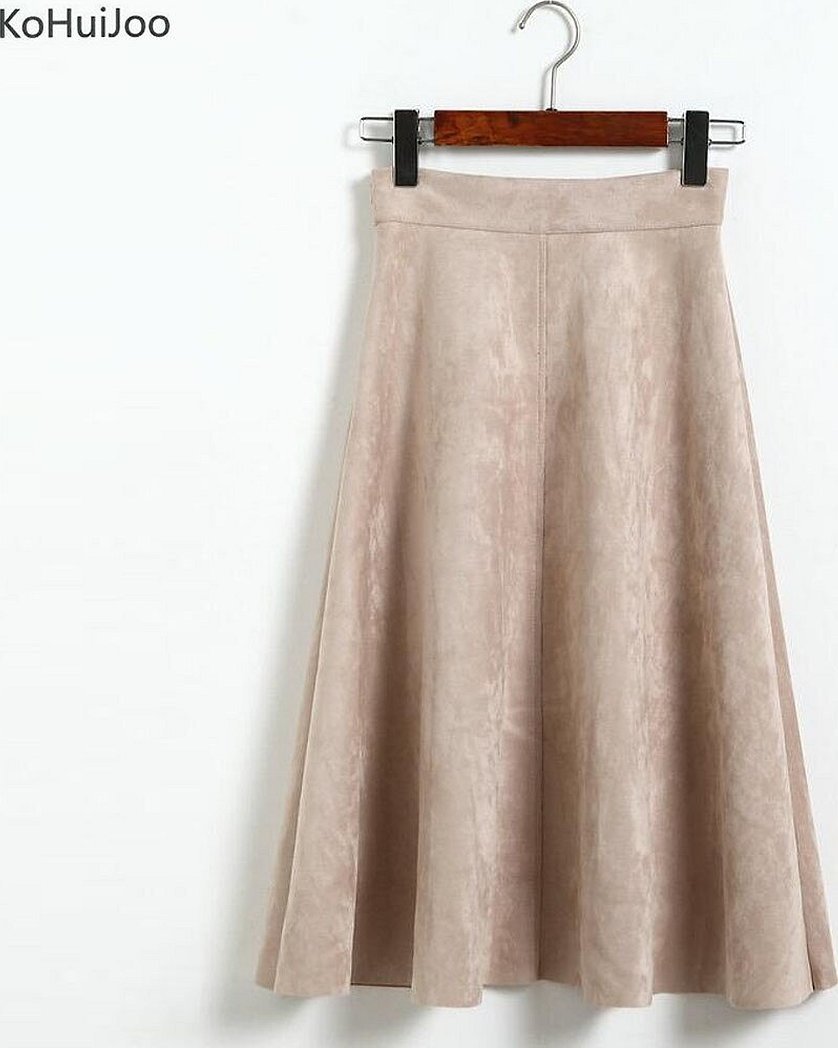
In order for the skirt to hold its shape well, it is better to take a denser material; for a fluttering sun style, a medium density.
Many people like models that flow at the legs, for such skirts you will need lighter materials. Ideally suited:
- chiffon;
- silk;
- crepe satin;
- batiste.
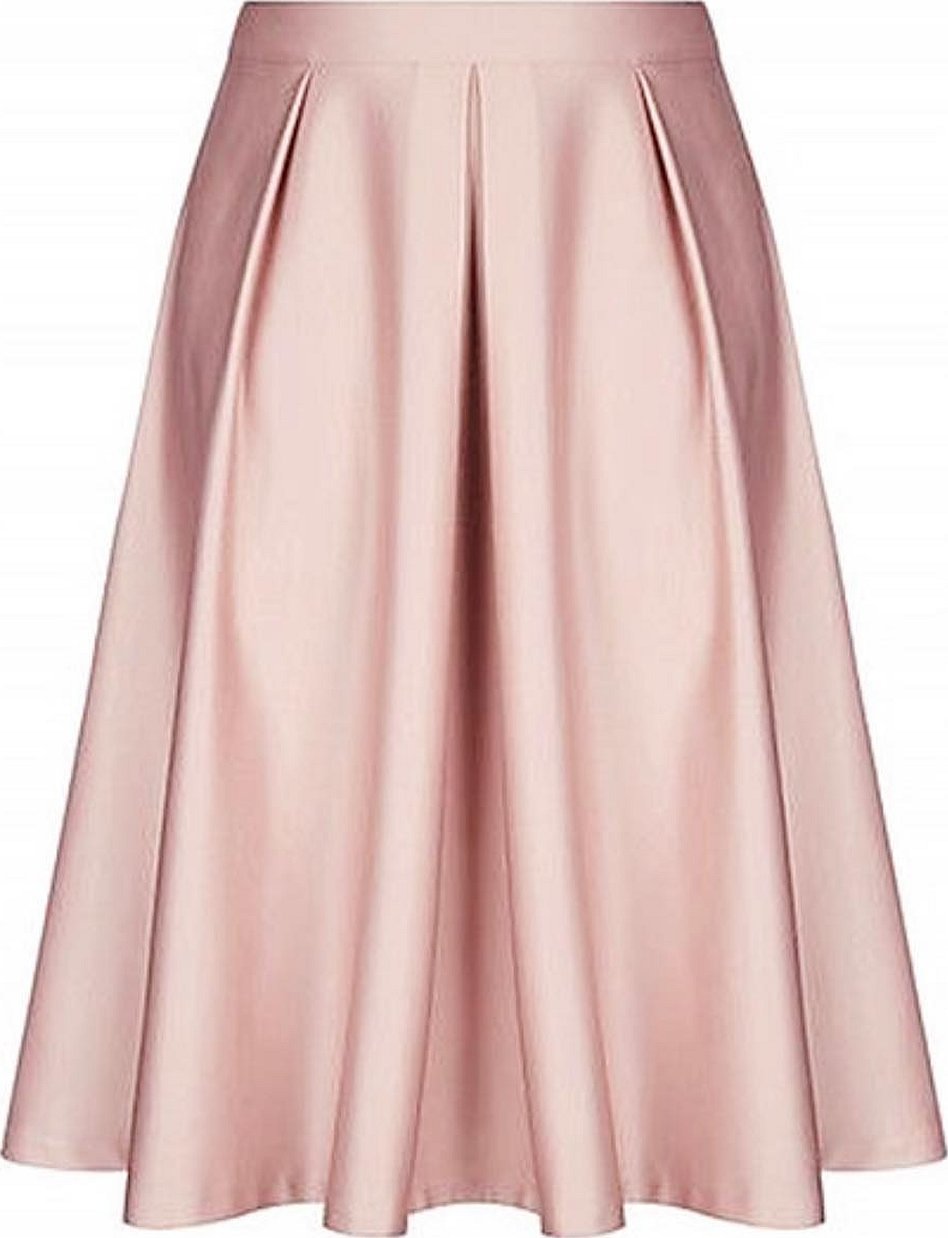
True, the folds of such models will not be clearly expressed, but it will be very feminine.
Important: As for the coloring, any will look stylish: plain, checkered, with a geometric print, etc.
Types of folds
There are many types of products. Globally, they are divided into:
- circular - look in one direction and are the basis for constructing other models;
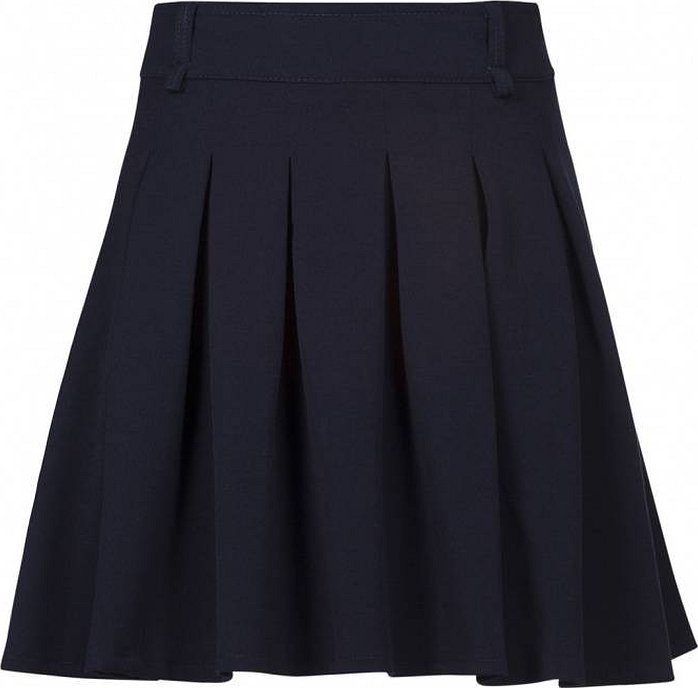
- counter - a complex design in which the folds face each other;
- bow-shaped - facing in opposite directions;

- fan-shaped - all originate from one point.
In addition, they are divided by the method of implementation:
- stitched - connected to each other with a seam on the inner, invisible side;
- stitched - connected with a decorative seam on the front side;
- connecting - connected with an invisible seam that runs through the hidden side of the fold.
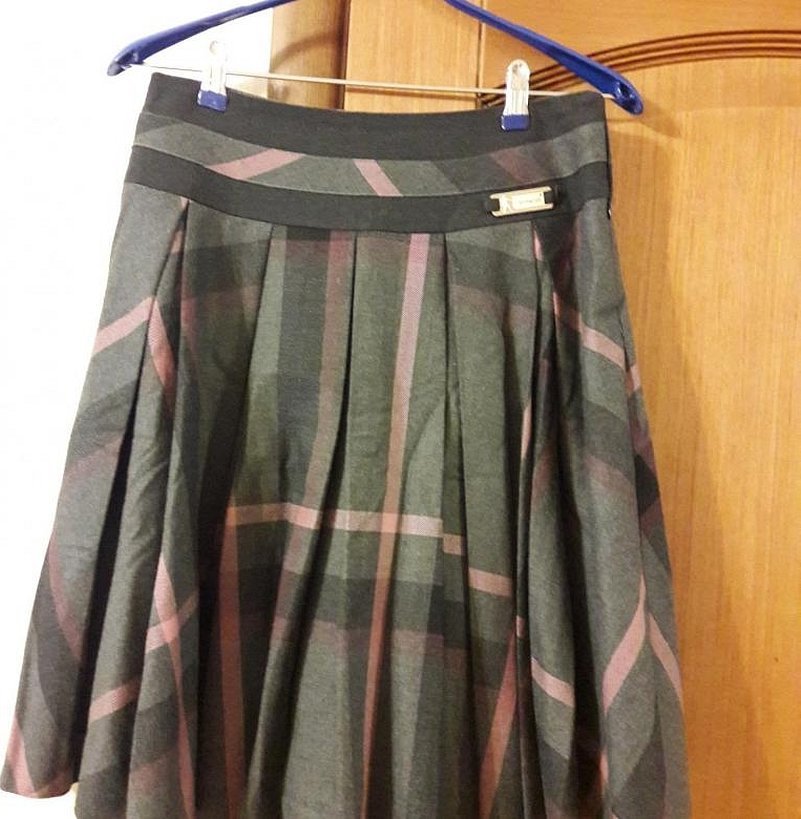
Each type has its own nuances.
Features of fold processing
Depending on the variety, they are processed differently:
- to work with circular ones, you need to fold the depth of the fold, then stitch and unfold, and if necessary, make a decorative stitch on the front side;
- for the oncoming ones, 2 single folds are laid, folded towards each other and folded, then stitched or sewn into the belt;
- bow folds are stitched along the entire width of the fold from the front side and then ironed out;
- fan-shaped - folds are marked, placed one above the other and duplicated in mirror image on the opposite side.
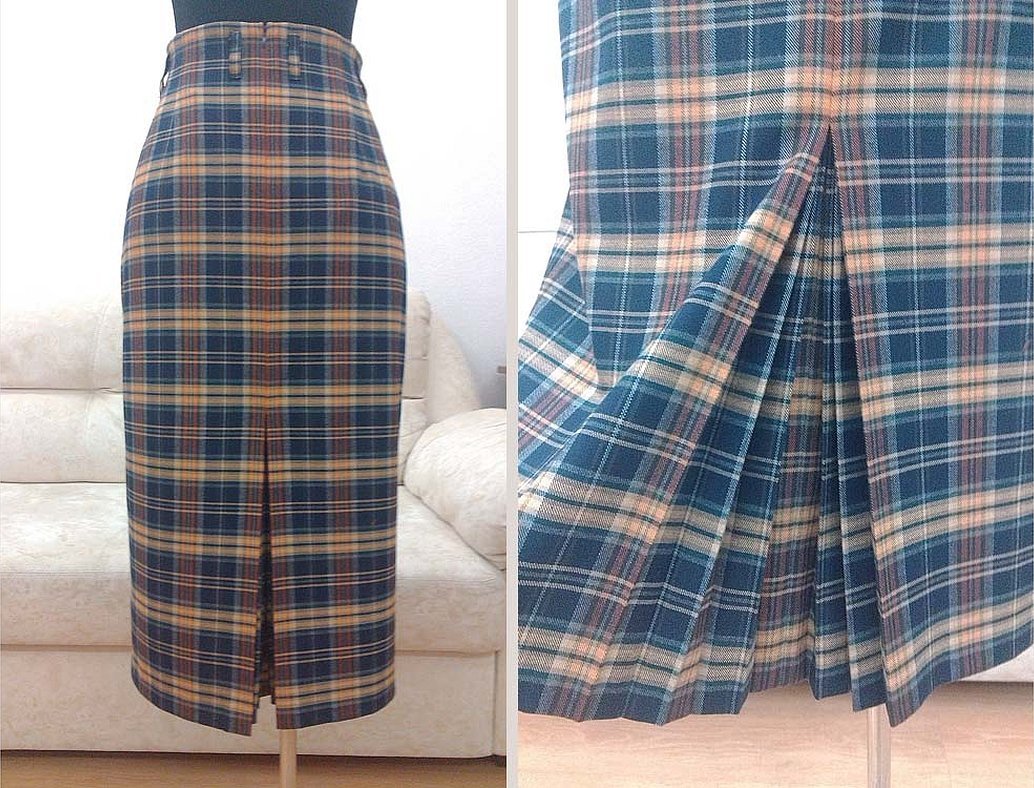
Calculation of folds
To calculate, you must first decide on their type. Fabric consumption will not differ, but the calculation of technical characteristics will be different.
The calculation is based on the hip volume. The width of the folds (folds) is usually from 3 to 7 cm. The width of one-sided circular ones is half the depth. An example of calculating the quantity is (hip volume (95) + allowance (4)) / 5 = 20 folds.
If you plan to use a box, the width will be twice as large and the calculation will be as follows: (hip circumference (95) + allowance (4)) / 10 = 10 folds.
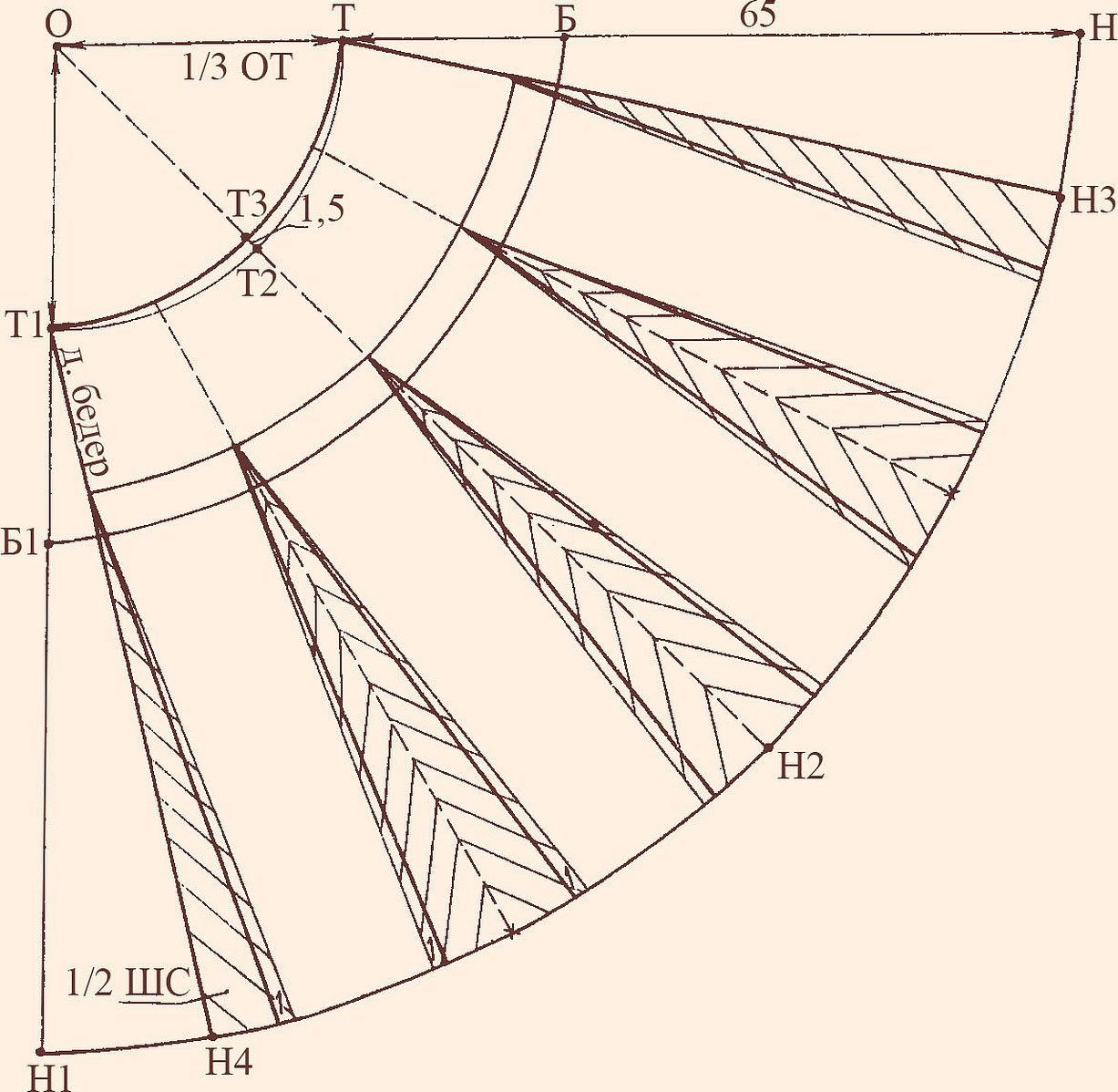
Fabric calculation
A product with such elements, as already indicated, can be with a depth less than the width or 2 times more. Accordingly, the fabric consumption will be different. To calculate the required fabric width, the hip measurement is multiplied by 3 (for full folds) + seam allowance. With economical details, the consumption will be less. The width of the elements does not have any special rules, it is chosen based on the girl's personal preferences.

Basic pattern step by step
The first thing you need to do is take measurements. The calculation example will have the following parameters:
- product length - 65 cm;
- waist size - 72 cm;
- hip volume - 100 cm;
- hip height - 20 cm.
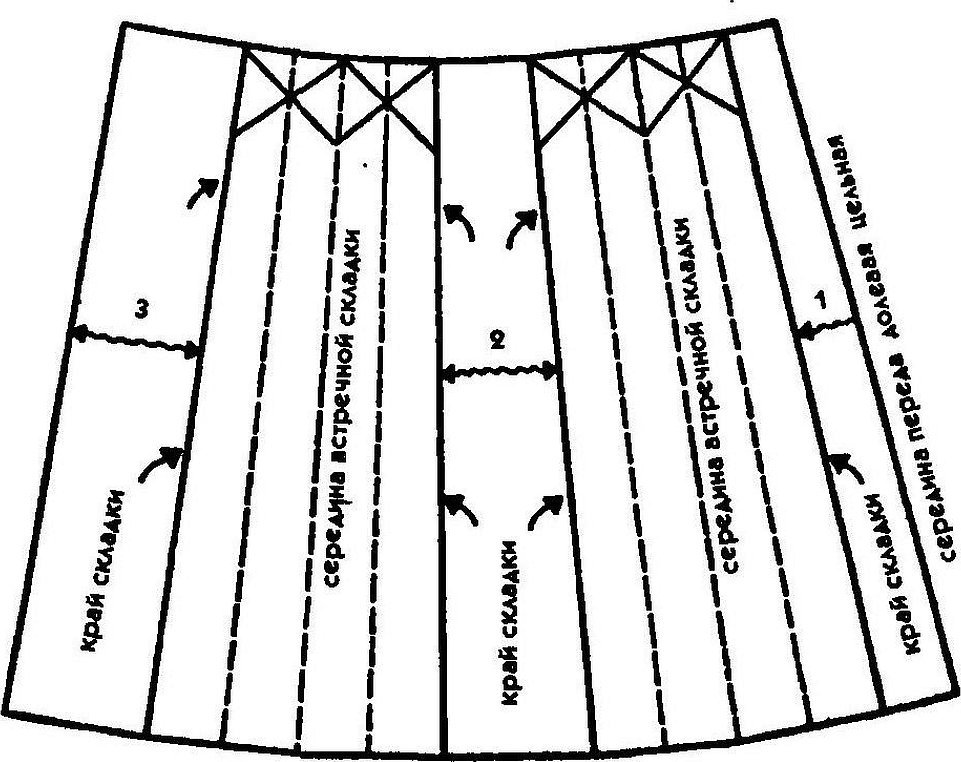
To calculate the fabric length: length (65) * 2 (width) + allowance for the top (1.5) + allowance for the bottom (4) = 135.5 cm.
To calculate the width of the belt: desired width (4) * 2 + allowances (3) = 11 cm.
That is, you will need a total of 146.5 cm of fabric.
To calculate the quantity, you will need to take 2 widths of fabric and divide them by the width of the fold.
After all the calculations, both pieces are basted together and you can start laying. After that, the side seams are stitched, a zipper is sewn into one of them and a belt is sewn into the fold along the upper edge (you can make a version on the yoke). This model is suitable for sewing any skirt with folds.
Skirt with box pleats, pattern and step-by-step description
There are plenty of master classes on the Internet. But everything can be done much easier if you are not a master with a lot of experience. For such products, it is not at all necessary to make a pattern. The folds can be basted with chalk or any other washable substance (for example, soap). The width of the required amount of fabric is calculated using the formula waist volume * 3 + allowances. In order for the skirt to sit not tightly, but on the figure, you will need an additional 4 cm, if it should be loose and hide the flaws, then + 15 cm.
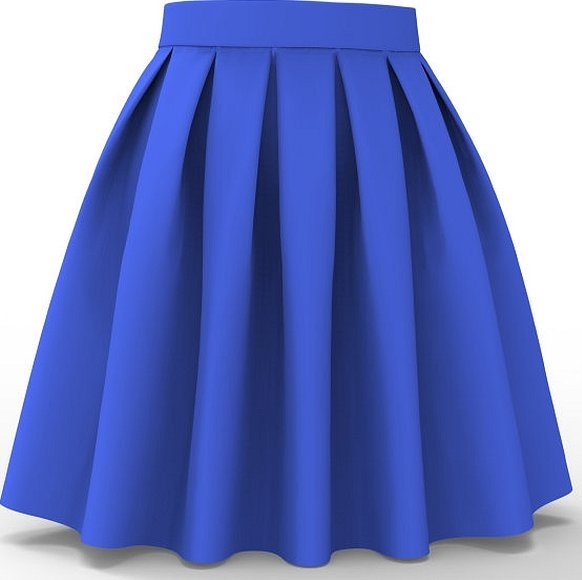
Attention: When sewing 2 parts of the fabric, baste, mark the waist line with chalk (about 1 cm from the top) and start forming folds from there.
Model with inverted pleats
A more suitable material for such a skirt would be linen.
Lay out the fabric and measure 45 cm (excluding the waistband) + 3 cm for hemming the bottom. Then cut out a rectangle and start forming folds, securing them with pins (facing each other). During the process, it is recommended to periodically try on the skirt so that it sits securely on the waist. Iron the folds. Then take a 10 cm wide piece of fabric for the waistband (it should be equal to the waist circumference + 2 cm). To make the waistband tighter, you can glue interlining to it. Next, stitch the waistband to the top of the skirt, sew in a zipper along the side seam, iron all seams and allowances carefully, stitch the bottom of the product.

Skirt with a pleat in front
First, you need to prepare all the details. To do this, measure the waist, divide it by 2, add 20 cm for the fold in front and 3 cm for the seam. Add 5 cm to the desired length for the belt and hem. For the back, half the waist * 1.5 and + 2.5 cm. The length remains unchanged. For the elastic, subtract 5 cm from half the waist.

Once everything is ready, start sewing the skirt. First, measure the center and 10 cm to the right and left, fix these points. Sew around the perimeter. Fold both the front and back 5 mm from the top and iron. Then fold the waistband (3 cm), insert the elastic (only at the back) and stitch. Fold the front and back parts with the right sides together, stitch the side seams, fold and stitch the bottom of the product.
Sewing a pleated skirt with your own hands may be difficult only for the first time, but once you start, everything will definitely work out. And step-by-step instructions will help with this.




